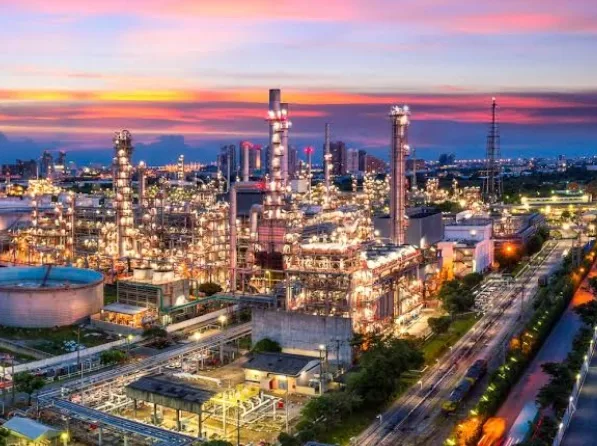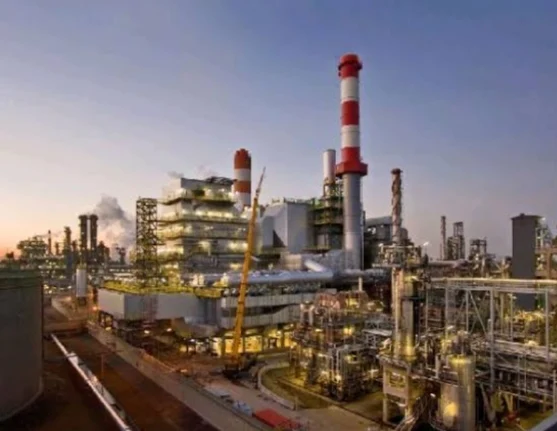A Green Giant in the Making: FFI and TES Partner for World's Largest Green Hydrogen Project in Germany
In the heart of Europe, a major collaboration is brewing to tackle the continent's energy and climate challenges.
Fortescue Future Industries (FFI) and Tree Energy Solutions (TES) have joined forces to develop the FFI & TES Green Hydrogen Project in Germany, aiming to become the world's largest green hydrogen integrated project.
FFI and TES Partner for World's Largest Green Hydrogen Project in Germany
FFI and TES have joined forces to develop the world's largest green hydrogen project in Germany. Here's a table summarizing the key aspects of this partnership:
| Partner | Role |
|---|---|
| FFI | Leading renewable energy developer and operator |
| TES | Global energy storage specialist |
| Project Details | Description |
|---|---|
| Location | Germany |
| Scale | World's largest green hydrogen project |
| Technology | Electrolysis using renewable energy sources |
| Hydrogen Production Capacity | Significant amount of green hydrogen |
| Purpose | To supply green hydrogen for various industrial applications |
This partnership aims to:
- Accelerate the transition to a clean energy economy.
- Reduce greenhouse gas emissions.
- Create new jobs and economic opportunities.
This ambitious initiative holds significant promise for Europe's clean energy transition, and here's why:
Project Highlights:
- Location: Wilhelmshaven, Germany, strategically positioned for import and distribution
- Capacity:
- 1 GW renewable energy production (solar and wind)
- 80,000 tons of green hydrogen per year by 2026, scaling up to 5.5 million tons by 2045
- Technology: Utilizing electrolysis powered by clean energy sources
- Focus: Integrated approach from production to distribution and application
- Significance: Potential to significantly decarbonize various sectors:
- Transportation: Powering fuel cell vehicles and maritime shipping
- Industry: Decarbonizing steelmaking, chemical production, and other sectors
- Power generation: Balancing intermittent renewable energy sources like solar and wind
Key Elements of the Project:
- Renewable Energy Generation: The project will harness the power of solar and wind farms to produce clean electricity for hydrogen production.
- Electrolysis: Advanced electrolyzers will efficiently convert the clean electricity into green hydrogen.
- Hydrogen Storage and Transportation: Efficient storage and transportation solutions are crucial for widespread use, and various options like pipelines and compressed hydrogen are being explored.
- Distribution and Application: The project aims to establish a robust network for delivering green hydrogen to targeted sectors across Germany and Europe.
Benefits and Impact:
- Reduced Emissions: Replacing fossil fuels with green hydrogen can significantly reduce greenhouse gas emissions and combat climate change.
- Energy Security: Green hydrogen can diversify Europe's energy mix and reduce dependence on fossil fuel imports.
- Economic Growth: The project has the potential to create jobs and boost economic activity in the clean energy sector.
- Technological Advancement: This large-scale project can accelerate the development and deployment of green hydrogen technologies.
Technological Prowess Driving the FFI & TES Green Hydrogen Project in Germany
The FFI & TES Green Hydrogen Project, aiming to be the world's largest, promises a clean energy revolution in Germany. Its success hinges on cutting-edge technologies across every stage, from renewable energy generation to hydrogen production, storage, and distribution. Let's delve into the technological marvels powering this ambitious project:
Renewable Energy Powerhouse:
- Solar and Wind Synergy: The project leverages a diverse mix of solar and wind farms, maximizing energy capture across different weather conditions.
- Smart Grid Integration: Advanced grid management systems ensure optimal renewable energy utilization and efficient power transfer for electrolysis.
Electrolysis Efficiency:
- High-Temperature Electrolyzers (HTEs): These advanced electrolyzers boast higher efficiency and lower energy consumption compared to traditional options.
- Membranes with Improved Durability: Next-generation membranes offer enhanced durability and resistance to degradation, ensuring long-term operational stability.
Hydrogen Storage and Transportation:
- Underground Salt Caverns: Utilizing existing salt caverns for bulk hydrogen storage provides a safe, cost-effective, and large-scale solution.
- Gaseous or Liquid Hydrogen: Depending on transportation needs, compressed gaseous or liquefied hydrogen might be employed, requiring specialized pipelines or cryogenic tanks.
Distribution and Application Infrastructure:
- Hydrogen Hub Development: Wilhelmshaven is envisioned as a central hydrogen hub, facilitating distribution to various sectors across Germany and Europe.
- Fuel Cell Technology for Multiple Applications: From powering fuel cell vehicles to decarbonizing industrial processes, diverse applications leverage this efficient technology.
Beyond Individual Technologies:
- Digitalization and Automation: The project heavily relies on digital tools for process optimization, monitoring, and maintenance, ensuring smooth operations and data-driven decision-making.
- Advanced Materials: Research and development in novel materials for electrolyzers, pipelines, and storage tanks contribute to improved efficiency, durability, and safety.
Challenges and the Path Forward:
While these technologies hold immense promise, challenges remain. Scaling up production, reducing costs, and ensuring efficient integration across the entire value chain are crucial hurdles. Collaboration with research institutions, technology developers, and policymakers will be instrumental in overcoming these challenges and realizing the project's full potential.
The Road Ahead:
The FFI & TES Green Hydrogen Project is currently in the planning stages, and construction is expected to begin soon. With its ambitious goals and integrated approach, this project has the potential to be a game-changer for Europe's clean energy future. However, several challenges need to be addressed, including scaling up production, reducing costs, and establishing adequate infrastructure.
Conclusion:
The FFI & TES Green Hydrogen Project represents a significant step towards harnessing the power of green hydrogen for a sustainable future. As the project progresses, it will be closely watched by the global community, offering valuable insights for accelerating the clean energy transition worldwide.
The FFI & TES Green Hydrogen Project showcases the power of cutting-edge technology in unlocking a sustainable future. By harnessing the combined strength of these innovations, this project can pave the way for widespread green hydrogen adoption and accelerate the clean energy transition in Germany and beyond.
Frequently Asked Questions about the FFI and TES Green Hydrogen Project in Germany
General Questions
- What is the significance of this project? This project aims to be the world's largest green hydrogen production facility, demonstrating the potential of green hydrogen as a clean energy source.
- Why is Germany a strategic location for this project? Germany has a strong commitment to renewable energy and is actively working to reduce its carbon footprint.
- What are the primary goals of the partnership between FFI and TES? The partnership aims to develop, construct, and operate the green hydrogen project, contributing to a sustainable energy future.
Project Details
- What is the estimated production capacity of the project? The exact production capacity will be announced closer to the project's completion, but it is expected to be substantial.
- How will the green hydrogen be produced? The project will utilize electrolysis, powered by renewable energy sources, to split water into hydrogen and oxygen.
- What are the potential applications for the produced green hydrogen? The green hydrogen can be used in various industries, such as transportation, steel production, and chemical manufacturing.
Environmental and Economic Impact
- How will this project contribute to reducing greenhouse gas emissions? By producing green hydrogen, the project will help to replace fossil fuels and reduce carbon emissions.
- What are the economic benefits of this project? The project will create jobs, stimulate local economies, and contribute to Germany's energy transition.
- How will this project support Germany's energy independence goals? By producing green hydrogen domestically, Germany can reduce its reliance on imported fossil fuels.
Challenges and Opportunities
- What are the main challenges in developing such a large-scale green hydrogen project? Challenges include securing necessary permits, financing, and ensuring a reliable supply of renewable energy.
- What are the potential opportunities for further growth and expansion? The success of this project could pave the way for additional green hydrogen projects in Germany and other regions.


